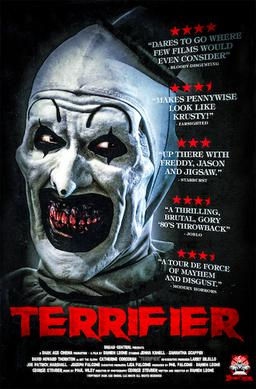Cujo (1983) review
- Jeremy Kelly
- Oct 19, 2021
- 4 min read
19. Cujo (1983)
Directed by: Lewis Teague
Produced by: Robert Singer, Daniel H. Blatt
Screenplay by: Don Carlos Dunaway, Barbara Turner
Starring: Dee Wallace, Daniel Hugh-Kelly, Danny Pinaturo, Ed Lauter, Christopher Stone

Time for another Stephen King film! Prior to 1983, only four of the horror-meister’s works had seen television and film adaptations, discounting the fact that “Creepshow” was an anthology film that adapted two of his short stories. But this was a big year that saw three of his novels brought to the big screen; the first was “Cujo,” based on the killer dog book that King apparently has very little memory of actually writing because of his alcoholism. Fair warning: this is not what you would call a “fun” movie to watch; it’s essentially about a St. Bernard named Cujo that becomes rabid and attacks people. Obviously, it’s hard to enjoy watching something that features a dog as the primary antagonist, because dogs are pretty much universally loved. Anyway, it’s unpleasant, the pacing is sloppy, and much of what happens feels extraneous; yet it’s undoubtedly harrowing and well-acted at the best of times.
The film opens as innocently as you can imagine, with Cujo chasing a rabbit while whimsical music plays; he ends up with his head in a cave, where he’s bit by a rabid bat (leave even more COVID jokes in the Comments below). We’re then introduced to the Trenton family—married couple Donna and Vic (Dee Wallace & Daniel Hugh Kelly), and their young son Tad (Danny Pintauro). Much of their screen time is spent on domestic affairs; Tad is frequently scared of monsters in his closet, Vic is having work problems, Donna has an affair with her ex-boyfriend Steve (Christopher Stone), and they frequently take their Ford Pinto in for repairs to local mechanic Joe Camber (Ed Lauter). Cujo is his pet, and his condition deteriorates mostly unnoticed until he goes mad and kills both Joe and his neighbor Gary (Mills Watson). After Vic goes out of town on business, Donna and Tad take the car back to the Camber house, where Cujo attacks them, forcing them to stay inside the Pinto, which breaks down when they try to leave. So they’re stuck in the car with a mad dog outside, relegated to wait until help arrives.

I’m slightly torn when it comes to the characters, because Dee Wallace, Daniel Hugh Kelly and Danny Pintauro are all believable in their respective roles, showcasing genuine love and turmoil, and yet their actual plot threads end up quite unnecessary. I mean it, a lot of time is devoted to Donna’s affair and Vic’s advertising company having problems with a cereal commercial, and it just has nothing to do with anything. I don’t mind the storylines themselves, but I feel like there’s too much time spent on them. I didn’t even mention the fact that Joe has a wife Charity (Kaiulani Lee) and son Brett (Billy Jacoby), the latter of whom is the first to suspect that Cujo has a problem, because their characters are basically window dressing, eventually written out before anything happens. Cujo himself is played by four St. Bernards, several mechanical dogs, a dressed-up Labrador-Great Dane mix, and stuntman Gary Morgan in a costume. You might say that makes for some inconsistencies as far as what Cujo looks like, but I like to think it’s fitting, that he’s becoming a completely different kind of animal the more sick he gets.
You know, I never realized just how many King stories have the premise of characters being stuck somewhere: they get trapped in blizzards, in the sand at the beach, on a raft, in a crazy woman’s house, in prison, in a hotel room, etc. But you have to give them credit when they really manage to make the experience of being stuck in a car look scary; as we’ve read about in too many news stories, there’s only so long you can sit in a car that’s off before heatstroke or dehydration set in. The cinematography, editing and makeup all help make Cujo look legitimately threatening, becoming increasingly covered in blood, dirt and foam, which was actually a mixture of egg whites and sugar; it makes for some startling moments, like the first time he attacks the car. However, it gets tiring after a while, and the story’s overall structure has it so the supporting cast is essentially chasing the wrong leads when they realize that Donna and Tad are missing. It’s not done in a clever way either; it’s just frustrating, and the note it ends on is really rushed and awkward.

For all its basic faults, “Cujo” is a movie that you can still take seriously, almost to a fault, although there are plenty of gimmicky slow motion shots and this really weird spinning dolly shot inside the Pinto—seriously, what was up with that? But anyway, you kind of need to have a fairly cynical mindset going into this; this dog is not a big friendly puppy, but an obstacle that must be overcome, and it’s the survival element that pushes the characters forward, which Wallace pushes with excellent and relatable resolve. This movie was a modest hit that’s gained kind of a cult following, while “The Dead Zone” received glowing critical praise and “Christine” has certainly garnered a fan base. Nevertheless, this year arguably set the template of King’s commercial power, as he saw major adaptations for many of his works over the next several years. Obviously, the quality has varied, and this isn’t as beloved as others, but I think it mostly accomplishes what it sets out to do.
My rating: 7/10





Comments